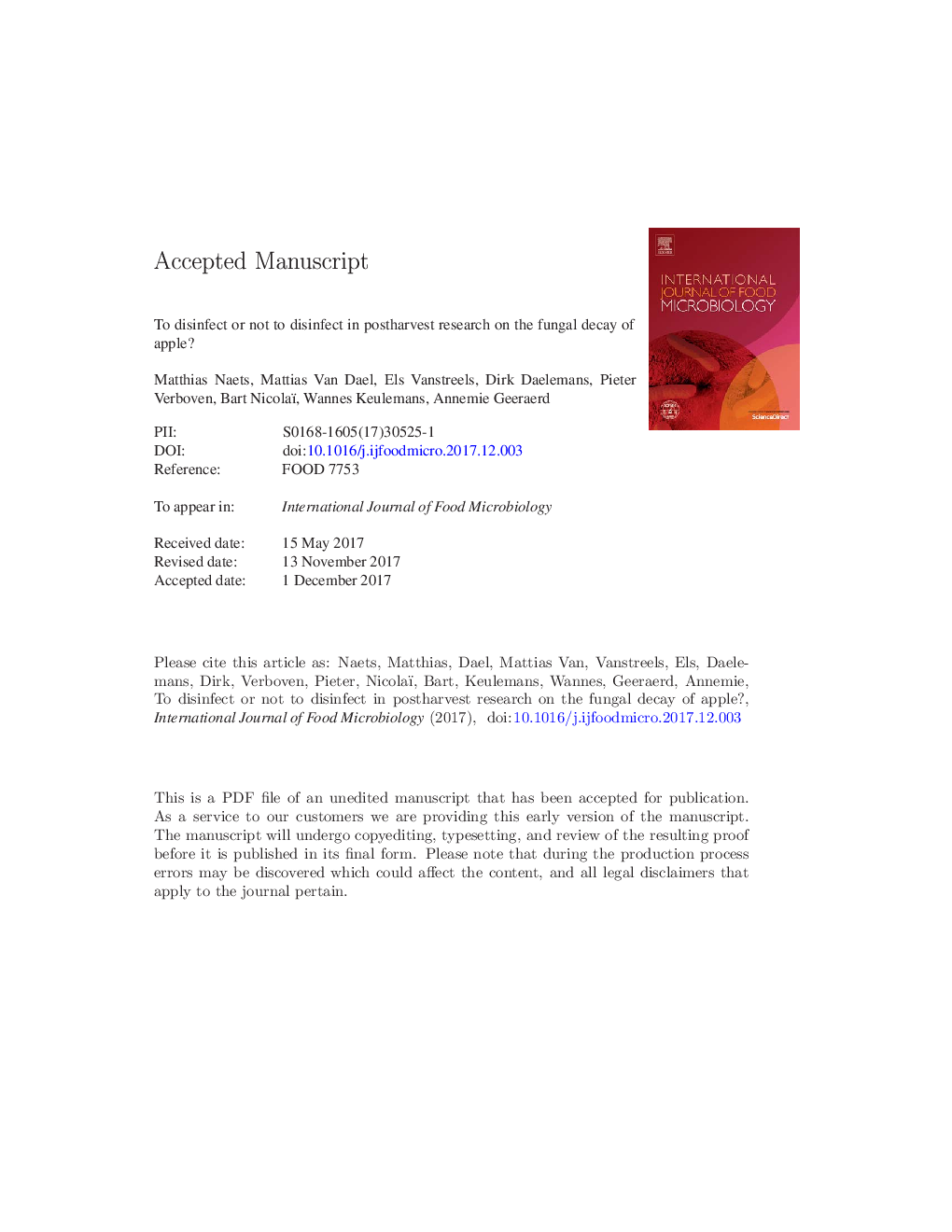| کد مقاله | کد نشریه | سال انتشار | مقاله انگلیسی | نسخه تمام متن |
|---|---|---|---|---|
| 8844325 | 1616517 | 2018 | 35 صفحه PDF | دانلود رایگان |
عنوان انگلیسی مقاله ISI
To disinfect or not to disinfect in postharvest research on the fungal decay of apple?
ترجمه فارسی عنوان
برای ضدعفونی کردن یا نه ضدعفونی کردن در تحقیقات بعد از قارچ سیب
دانلود مقاله + سفارش ترجمه
دانلود مقاله ISI انگلیسی
رایگان برای ایرانیان
موضوعات مرتبط
علوم زیستی و بیوفناوری
علوم کشاورزی و بیولوژیک
دانش تغذیه
چکیده انگلیسی
Postharvest losses of fruit and vegetables can reach up to 30%, the main cause being microbial decay. For apple fruit, mostly fungal pathogens, such as Penicillium expansum, Colletotrichum spp., Neofabraea spp. and Botrytis cinerea, are important. As such losses are unsustainable in many ways, it is necessary that research is conducted to prevent them. Generally, for plants and fruit grown under non-sterile field conditions, disinfection is carried out prior to the start of a phytopathological experiment. The motivation for this practice is the removal of background contamination so that it will not affect the experimental outcome and its interpretation. In literature, a plethora of disinfection methods exists, differing in disinfectant, strength and duration. The following two disinfectants are commonly used: sodium hypochlorite (NaOCl) and ethanol. This article presents a targeted investigation into the effects of these two disinfectants on apple fruit surface and physiology. The results clearly demonstrate that both were affected by both disinfectants. NaOCl caused oxidative damage to the apple's wax layer, causing it to crack. Ethanol affected a redistribution of the wax on the fruit surface and altered the wax composition and/or metabolism. Both NaOCl and ethanol treatment resulted in an increased respiration rate. Therefore, apple and possibly other fruit should not be disinfected in phytopathological studies. A negative control, as is typically used, is not solving this issue, as we clearly demonstrate that the living tissue shows metabolic effects following disinfection, and hence the study objects are changed, hampering a clear interpretation of the experimental outcomes. Moreover, fungal inoculation during experiments is typically taking place at rather large levels in wounded tissue (as infection success is the exception), outnumbering the variable levels of background population, if present.
ناشر
Database: Elsevier - ScienceDirect (ساینس دایرکت)
Journal: International Journal of Food Microbiology - Volume 266, 2 February 2018, Pages 190-199
Journal: International Journal of Food Microbiology - Volume 266, 2 February 2018, Pages 190-199
نویسندگان
Matthias Naets, Mattias van Dael, Els Vanstreels, Dirk Daelemans, Pieter Verboven, Bart Nicolaï, Wannes Keulemans, Annemie Geeraerd,
